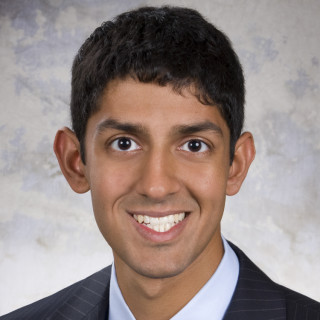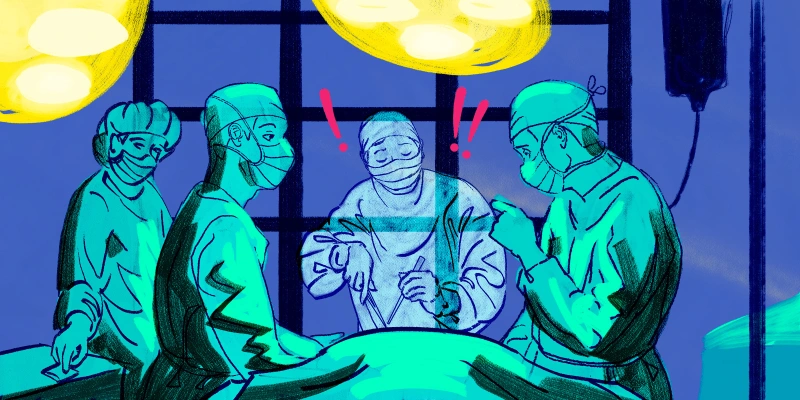
Last weekend I attended the 2019 American Society of Retinal Specialists (ASRS) Annual Meeting in Chicago, IL. The ASRS meeting is a wonderful collaborative venture that features novel innovative research, instructional courses, and presentations of unusual retina cases. Here I will highlight a few of the most memorable experiences from a fruitful and productive weekend.
The non-exudative age-related macular degeneration session that kicked off the meeting on Saturday morning was thought-provoking. Highlights from the session included a terrific talk by Dr. Amir Kashani describing the surgical methods and intraoperative results of a phase1/2a study utilizing a bioengineered retinal pigment epithelium (RPE) patch for treatment of geographic atrophy. While the study’s final results are still pending, the surgical technique appears reproducible and safe. Dr. Peter Kaiser also described exciting results of a phase 2 study randomizing patients to treatment with risuteganib injection versus sham for dry age-related macular degeneration. Risuteganib is an integrin regulator that may reduce mitochondrial reactive oxygen species and cellular apoptosis in dry age-related macular degeneration. The study met the primary endpoint with the treatment group having a statistically significant higher proportion of eyes with eight letter gain or more in the study period; a larger study is pending to further examine this new drug agent.
For the second straight year, I also had the privilege of running a course for retinal specialists on utilizing online and social media for patient and physician education and outreach. Dr. Sunir Garg first reviewed the different options available for physicians to do peer-to-peer digital education, including videos, online and journal articles, and audio recordings including podcasts. Dr. David Almeida helped the audience better understand what a brand is and how to take control of their brand as physicians by creating and monitoring consistent content. Finally, Dr. Ajay Kuriyan stole the show with a riveting series of unfortunate case examples of physician and health professional missteps with social media. Key learning lessons included care to ensure all photographs posted online are free of patient identifiers (including computer screens in the background), to always obtain patient consent when posting or discussing potentially identifiable interesting cases, and to maintain privacy over personal social media accounts. The audience participation throughout was terrific with a long discussion on the differences between legal and public perception ramifications for healthcare providers’ social media mistakes.
The surgical case conference concluded the first day of the meeting and is always a crowd-pleaser with surgeons bringing videos showing their most unusual or difficult cases. Dr. Parisa Naeimi demonstrated a case of a subretinal nematode that formed a cyst and was en toto. The pathology was correlated with multiple infectious cystic brain lesions seen on neuroimaging. Dr. Christina Weng capped off the session by showing perhaps the most challenging case of the day with video illustrating her deft extraction of a dropped partial thickness corneal transplant on the retinal surface. The Drs. ‘Carl’ (Drs. Carl Awh, Baker, Class, and Regillo) moderated the panel with grace and noted that in the few reported cases of dropped corneal transplants proliferative vitreoretinopathy and retinal detachment was extremely common.
Finally, right before leaving Chicago, I participated in a wonderful panel organized by Dr. Ajay Kuriyan looking at secondary intraocular lens options for patients with poor lenticular capsular and sulcus support. Dr. Audina Berrocal discussed techniques for iris-suturing three-piece intraocular lenses, Dr. Omesh Gupta reviewed the benefits of Goretex sutured intraocular lenses (including the Bausch and Lomb Envista MX60 and Akreos AO60), Dr. Ashkan Abbey reviewed pearls for modified-Yamane trocar assisted scleral fixation of three-piece intraocular lenses, and Dr. Sunil Srivastava reassured the audience that anterior chamber intraocular lenses are still reliable and useful in multiple clinical scenarios. As more and more Americans have cataract surgery, dislocated intraocular lenses managed by retinal surgeons are becoming more common and Dr. Kuriyan showed tricks for retrieving these lenses, including utilizing soft-tipped extrusion cannula to deliver lenses safely from the retinal surface to the anterior chamber for extraction.
Image: Arthimedes / shutterstock






